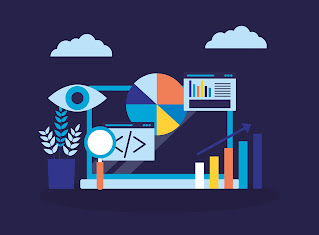Introduction:
"Reinforcement Learning" (RL) is a subfield of "Machine Learning" that focuses on developing agents that can learn how to make decisions based on feedback from the environment.
In this blog post, we will introduce the basics of RL and explain how it works, as well as some common RL algorithms In 2025.
What is Reinforcement Learning?
"Reinforcement Learning" is a type of "Machine Learning" that focuses on how to make decisions in an uncertain environment. The idea is to train an agent to learn from feedback from the environment in order to make better decisions.
RL involves the interaction of an agent with an environment through the process of taking actions and receiving rewards or punishments. The agent learns to select actions that maximize the expected reward over time. The goal of RL is to develop agents that can learn how to make decisions by taking actions in an environment to maximize a cumulative reward.
The RL process consists of four main components:
1. Environment:
The environment is the external system that the agent interacts with. It can be a physical or a simulated environment.
2. State:
The state is the current situation of the environment that the agent is aware of.
3. Action:
An action is a decision that the agent makes based on the current state.
4. Reward:
A reward is a numerical feedback that the agent receives for taking an action in a specific state. The agent tries to maximize the total reward it receives over time.
How does Reinforcement Learning work?
In "Reinforcement Learning", the agent interacts with the environment by taking actions and receiving rewards. The agent uses this feedback to learn from experience and improve its decision-making capabilities.
The agent's goal is to learn a policy that maps the current state to an action that maximizes the expected reward. The policy is a function that takes the current state as input and returns an action.
The RL process works as follows:
1. The observer takes note of the present state of the surroundings.
2. The agent selects an action based on its current policy.
3. The environment transitions to a new state based on the selected action.
4. The agent receives a reward based on the new state and the selected action.
5. The agent updates its policy based on the observed state, selected action, and received reward.
6. The process repeats from step 1 until the agent reaches a terminal state or a maximum number of steps.
RL Algorithms:
There are many different algorithms for RL, each with its own strengths and weaknesses. Here are some of the most common algorithms:
1. Q-Learning:
Q-Learning is a model-free algorithm that learns the optimal action-value function for a given environment.
The action-value function is a function that estimates the expected reward of taking an action in a specific state.
2. SARSA:
SARSA is another model-free algorithm that learns the optimal policy by estimating the expected reward of taking an action in a specific state and following a specific policy.
3. Deep Q-Networks (DQN):
DQN is a model-free algorithm that uses a "Neural Network" to estimate the optimal action-value function. It is particularly effective in environments with large state spaces.
4. Actor-Critic:
Actor-Critic is a model-based algorithm that learns both a policy and an action-value function. The actor component learns the policy, while the critic component learns the action-value function.
5. Policy Gradient:
Policy Gradient is a model-free algorithm that learns the optimal policy by directly optimizing the policy function. It is particularly effective in environments with continuous action spaces.
Applications of Reinforcement Learning:
RL has a wide range of applications in various fields, including robotics, game AI, finance, and healthcare. Here are some examples:
1. Robotics:
"RL" can be used to train robots to perform complex tasks, such as grasping objects, walking, or flying.
2. Game playing:
"Reinforcement learning" has been used to create game-playing agents that can beat human players in games such as chess, Go, and poker.
3. Recommendation systems:
"Reinforcement learning" is used in recommendation systems to provide personalized recommendations to users based on their past behavior.
4. Finance:
"Reinforcement learning" is used in finance to make predictions and optimize trading strategies.
5. Healthcare:
"Reinforcement learning" is used in healthcare to optimize treatments and improve patient outcomes.
Conclusion:
"Reinforcement learning" is an exciting area of "Machine learning" that has the potential to revolutionize various fields. It involves an agent learning from its environment through trial and error to maximize a reward signal. RL has numerous applications, including robotics, game playing, recommendation systems, finance, and healthcare.
By providing a human touch and focusing on the big picture, beginners can gain a better understanding of RL and its potential.
Thank you for reading this post and continue your happy exploring Related to "Artificial Intelligence" Such as,
Artificial Intelligence and Machine Learning for Beginner's
If you Like to Explore the Other Trending Technology Related Topics?
Click On:
👇👇👇👇👇👇👇👇👇👇



